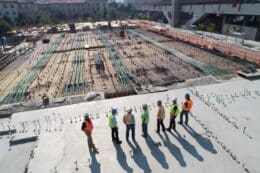Why Architects and Engineers Face Negligence, and How it can be Prevented

The legal definition of negligence is the failure to take proper care in certain circumstances. While this may seem straightforward, it’s actually quite broad and can lead to some confusion when applied to the fields of architecture and engineering.
For example, what does “reasonable” mean? What are similar circumstances? And who determines whether or not an action was reasonable? These questions are important because they impact how we view negligence claims against architects and engineers- and whether or not those claims will be successful in court.
The Impact of Negligence
Negligence is a serious matter. It can have dire consequences for both the individual and their family, as well as the industry at large. Negligence can lead to a lawsuit, potentially ending your career.
The Causes of Negligence
Negligence is the result of a number of factors, including:
Lack of experience- Architects and engineers who are new to their profession may not have the training or experience necessary to do their jobs properly. This can lead them to make mistakes that an experienced architect or engineer would not make.
Inadequate supervision- If you’re watching someone else’s work as a supervisor or manager, it’s your responsibility to ensure that they are doing their job correctly, even if they don’t ask for help with anything. You can also be held liable if you fail to supervise them properly. Poor communication between team members about what needs doing next on a project; this can lead people down different paths when it comes time for collaboration.
Preventing Negligence
Ensure that your architects and engineers have proper training and education.
Invest in technology that helps ensure a safe environment for all of your employees, such as fall protection systems.
The Role of Liability Insurance
Liability insurance is an important part of being an architect or engineer. It protects you from lawsuits if someone gets hurt on your project and claims that the design was negligent. If a building collapses, for example, it’s likely that someone will sue the architect or engineer who designed it.
The Role of Professional Organizations
If you’re an architect or engineer, you may have heard of professional organizations. These are groups that represent your profession and serve to promote good practices within it. They can help protect you from negligence claims by providing training on best practices and making sure that new technology is adopted safely.
Professional organizations also play an important role in preventing negligence by enforcing standards for how buildings should be designed, built and maintained. For example:
- The American Institute of Architects (AIA) has developed guidelines for how much space should be left between electrical outlets so they don’t overheat.
- The National Fire Protection Association (NFPA) publishes codes detailing how fire alarms should be installed.
The Role of Regulations and Laws
Regulations and laws are important because they help protect architects and engineers from negligence. They also protect clients from negligence. For example, if you’re an architect and your building collapses due to poor design, then the government will hold you accountable for any injuries or deaths that result from that collapse. This means that if someone gets hurt in your building because of its poor design, then that person can sue you for the damages. In addition to this protection against lawsuits, regulations also ensure that buildings are built according to certain standards so as not to harm anyone who uses them- for example, fire codes require all new structures be made with nonflammable materials.
It is extremely important to discuss negligence. Architects and engineers have a responsibility to the public, which they must take seriously. The consequences of negligence can be devastating for those involved in an accident caused by poorly designed buildings or roads. If you are injured because of poor design or construction work, contact an attorney immediately so that they can help you seek compensation for medical bills and other damages that may result from your injury.
You can always call our office at 1-877-PLIG-123 should you have any questions.

